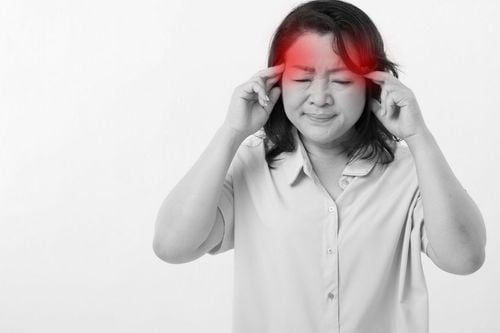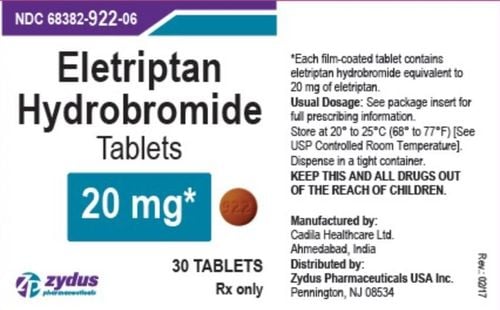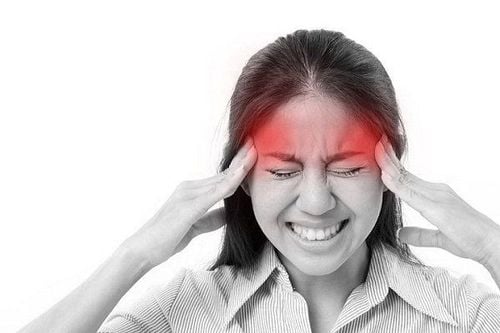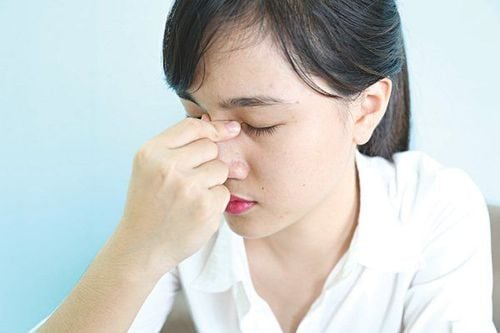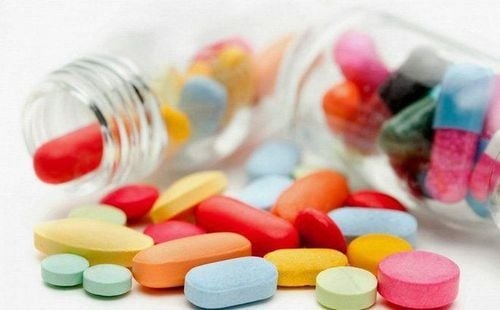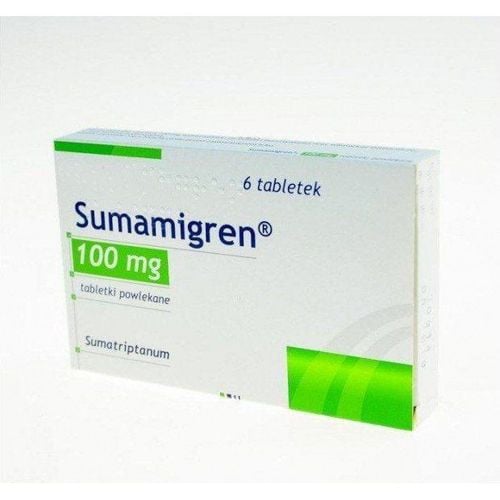This is an automatically translated article.
Posted by Dr. CKII Khuc Thi Nhen - Neurosurgeon - Outpatient Department - Vinmec Times City International Hospital
Migraine headache also known as migraine or semi-regular headache is a special type of headache, manifested by migraine attacks. Migraine accounts for about 10 - 12% of the population, is common in women, usually begins at the age of 10 - 40 years (accounts for 90%), some occurs in children, rarely over the age of 40, the disease is severe. family quality (70%).
Migraine headaches often recur, affecting work as well as quality of daily life.
1. Symptoms of Migraine Headache
When suffering from Migraine headache, the frequency of pain will be sparse or quick, the pain intensity is more or less depending on the patient. Migraine headache is divided into two types:
Migraine without warning signs: Having at least 5 attacks satisfying the following criteria: Headache lasting from 4-72 hours, usually pain on one side of the head, feeling of pulse in head. Moderate or severe pain that increases with exertion. During the pain, there may be symptoms of nausea and / or vomiting, photophobia, fear of sounds, without other accompanying manifestations. Migraine with warning signs (aura): Having at least 2 migraine-like attacks without warning signs. Warning signs include at least 1 of the following, but are fully reversible, such as flashes of light or lightning, double vision, dizziness, nausea, slurred speech, ataxia (staggering). At least 1 prodromal symptom develops slowly over 5 minutes and/or >= 2 symptoms occur consecutively but not more than 60 minutes, followed by headache. A migraine headache that doesn't go away for 72 hours is called a migraine state, and it's a rare situation that causes fear and anxiety.
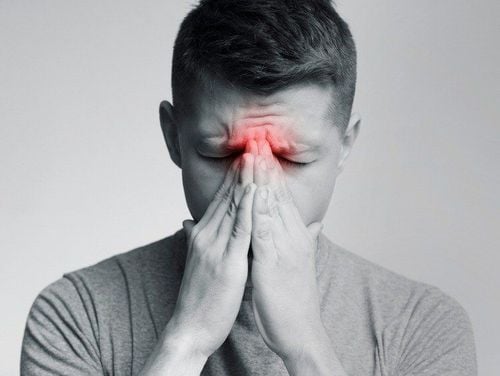
Cơn nhức đầu migraine không suy giảm kéo dài trong vòng 72 giờ được gọi là trạng thái nhức đầu migraine
2. Causes of Migraine Headaches
Migraine headache is a complex disease, related to genetic factors, endocrine causes, psychological and environmental factors:
Genetic factors: There are many people in the family with migraine, often associated with migraine with aura (an early warning sign of pain) compared with migraine without aura. Many studies have shown that migraine inheritance may be related to several genes (which account for generational skipping in some families). Hormonal causes: Migraine is not a disease of hormonal origin. Women with migraines do not have hormonal abnormalities. However, the occurrence of pain is influenced by changes in hormone levels, so it is more common in women than in men. In women, the majority of pain occurs around the menstrual period, before menopause pain intensity is more intense, whereas the frequency decreases during pregnancy or menopause. Psychological factors: Anxiety and depression are often associated with migraine, migraine sufferers have an increased response to stress so psychological stress is a trigger for pain, on the other hand if Severe headaches lead to increased anxiety in the patient (pathological spiral). Environmental factors: Sensory stimulation: Strong heat and light, loud noises, weather changes, strong odors...Some foods:Chocolate, alcoholic beverages, coffee.. .Lifestyle: Overwork, changing circadian rhythms, fasting, excess or lack of sleep...

Thiếu ngủ kéo dài có thể dẫn đến nhức đầu migraine
3. What is the method of treatment?
Migraine treatment includes pain relief (treatment of the attack) and prevention of the attack (treatment of the background). Although now there are many effective medicines, but the number of patients who come to the clinic and receive the right treatment is still small. Migraine headache patients are often misdiagnosed with vestibular syndrome or cerebral ischemia ... leading to ineffective treatment, possibly even leading to increased pain frequency and intensity.
3.1 Relief treatment For most migraine headache patients, non-steroidal anti-inflammatory drugs (AINS) are drugs with strong analgesic effects, used to relieve pain. In addition to Aspirin (500-2000mg/day), the drugs with strong analgesic effect commonly used are: Ibuprofen (1000mg - 2000mg/day), Naproxen (Apranax: 550 - 1100mg/day). Should be taken as soon as the onset of pain. Contraindicated in case of gastric ulcer - duodenal, drug allergy.
When the pain is no longer effective with AINS, it is necessary to try treatment with Ergotamine tartrate (1mg tablet), take 2mg as soon as the pain appears and can be repeated after 30 minutes if the pain persists, do not exceed 4mg /day and 10mg/week. Side effects: Vomiting, nausea, vasoconstriction, muscle twitching. Contraindicated in cases of coronary insufficiency, Raynaud's syndrome, severe hypertension, liver failure, pregnancy, children under 10 years of age, in combination with Macrolide or tricyclic antidepressants.
In case the patient has vomiting, the drug must be administered by parenteral route and symptomatic treatment of vomiting is required.
3.2 Prophylactic treatment Migraine patients need to receive prophylactic treatment in the following cases:
Have at least three attacks in a month; In cases where reliever drugs cannot be used or are ineffective; Must use reliever medication more than twice in a week; Unusual pain associated with hemiplegia or persistent warning signs (aura). For prophylactic treatment, a single drug should be used, which is gradually increased until it becomes effective. The course of treatment lasts 3-6 months. The drugs that can be used in prophylaxis are:
Propranolol 40mg tablets, dosage from 40 - 160mg / day divided into 2 - 3 times. Side effects: low blood pressure, fatigue, digestive disorders, nightmares, little sleep. Contraindications: Conduction disturbances, bradycardia <50 beats/min, heart failure, Raynaud's syndrome, bronchial asthma, in combination with tricyclic antidepressants. Amitriptyline tablets 25mg, dose from 25 to 75mg / day divided into 2 times. Side effects: Postural hypotension, somnolence, confusion, dry mouth, tremor, constipation, urinary retention, weight gain. Contraindications: Angle-closure glaucoma, prostate tumor, cardiac arrhythmias, conduction disturbances, epilepsy, pregnancy. Flunarizine 5mg x 1-2 tablets divided into 2 times. Side effects: Drowsiness, weight gain and/or appetite, prolonged use may cause anxiety, depression, Parkinson's syndrome. Topiramate tablets 25mg, dose from 25mg to 100mg/day divided into 2 doses after meals. Side effects: fatigue, dizziness, dizziness, loss of appetite, bitter mouth, diarrhea and weight loss, allergies. In addition, there are many other drugs that are effective for prophylaxis but are rarely used because of their side effects.
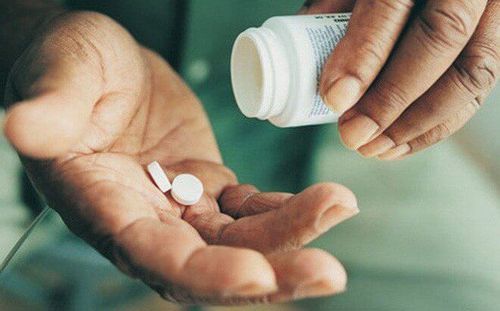
Để điều trị dự phòng đau đầu Migraine, nên dùng một loại thuốc, dùng với liều tăng dần cho tới khi tác dụng
4. Some tips for patients with migraine headache
Each patient needs to have a record of pain as well as unwanted effects of the drug to report to the doctor. In addition to taking medication, patients should exercise regularly in accordance with their health (walking, yoga...), relax, adjust work, eat and sleep on time. Here are some triggers to avoid:
Food: Alcohol; the coffee; chocolate. Attitudinal factors, behavior: Lack of sleep or sleeping too much; skip meals; psychological stress; vigorous physical activity. Environmental factors: Strong noise; perfume or cigarette smoke; height; sun exposure, glare. Vinmec International General Hospital with a system of modern facilities, medical equipment and a team of experts and doctors with many years of experience in medical examination and treatment, patients can rest assured to visit. and migraine headache treatment at the Hospital.
Please dial HOTLINE for more information or register for an appointment HERE. Download MyVinmec app to make appointments faster and to manage your bookings easily.
References: Headache Classification Committee of the International Headache Society (2013). The International Classification of the Headache Disorders, 3 rd edition; Cephalalgie 33 (9) 629-808.




